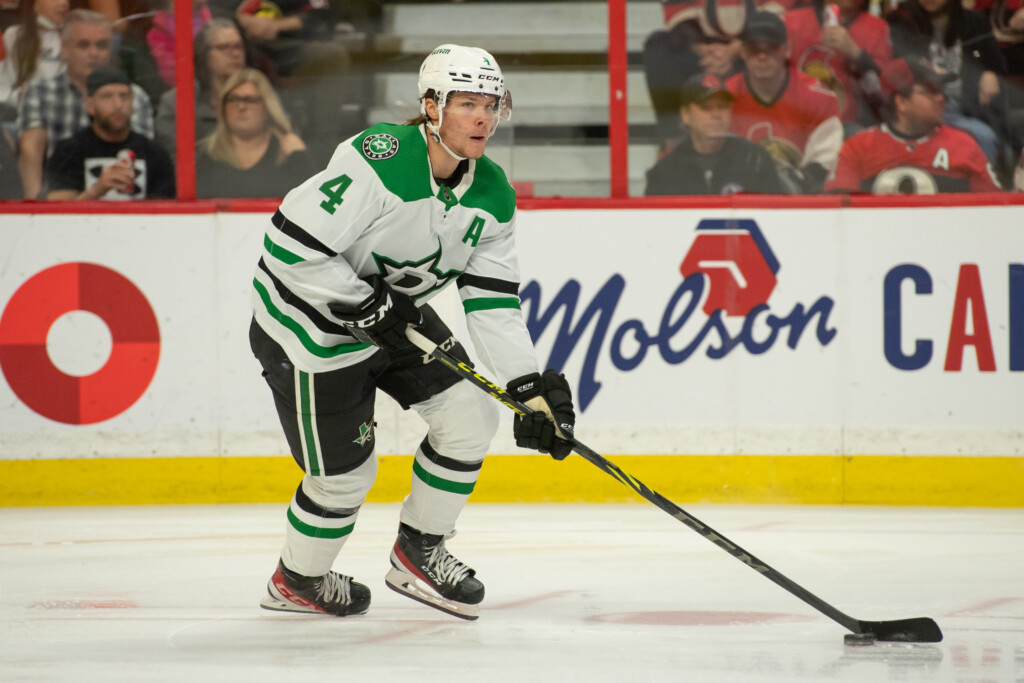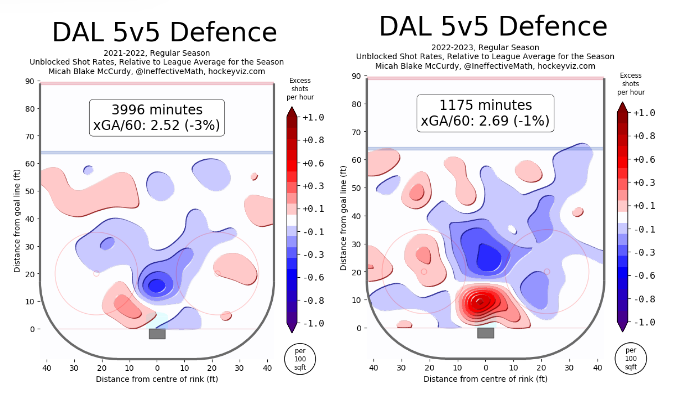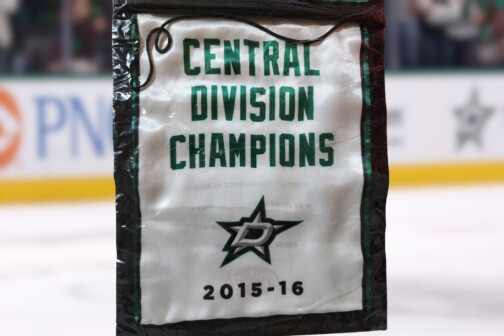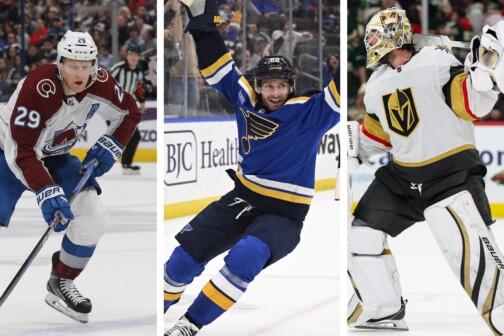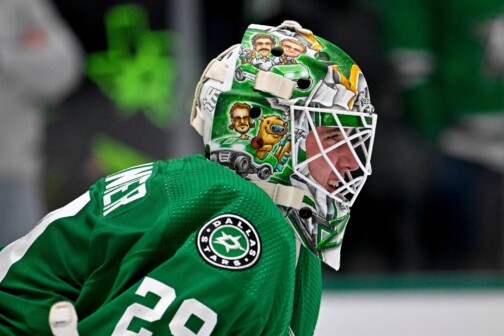After three seasons as one of the worst goal-scoring teams in the league at even strength, the Stars have scored the most goals in the NHL through 26 games. That’s right: Dallas, finally, is an exciting hockey team again. We haven’t seen a team like this since the peak of Jamie Benn’s career, and how the Stars are doing it is just as impressive as the fact that they’re doing it at all.
One of the things hockey coaches love to talk about is how offense needs to flow out of defense. “Play a 200-foot game.” “Check for chances.” “I’m more impressed with the backcheck.” You know the patter. Coaches prefer to praise hardworking defensive play rather than the gorgeous deke or booming shot. To wit:
Pete DeBoer on Jason Robertson: “I told him, I’ve seen the goal scoring ability, so the shot should impress the hell out of me, but it doesn’t. The blocked shot impresses the hell out of me. That’s what I liked.”
— Matthew DeFranks (@MDeFranks) November 29, 2022
Yes, offense comprises many things. We know this. Players who cheat for chances and shirk their defensive responsibilities usually end up like the fabled dog holding the bone who looked at his reflection in the lake and thought, “Why am I holding a bone? I am a fearsome canine; let’s go get a burger or something, baby.” (True story: that dog went on to found the Nashville Predators.) Anyway, the point is, generating more offense only helps a team when it’s done without creating problems on the back end.
But just as offense best flows from good positioning, hard skating, and dedicated forechecking—see Radek Faksa’s great assist on Mason Marchment’s goal Sunday—defense is framed by the choices a team makes with the puck. StrongSide’s Sean Shapiro touched on this in a recent mailbag. Dallas defensemen are more active in the attack this year, and the team is carrying the puck into the zone more often, rather than dumping it in like they did so often last year. Conventional wisdom would suggest that this would leave the Stars more vulnerable to the counterattack than under Rick Bowness’ safer approach, but that hasn’t turned out to be the case.
In fact, take a look at the year-over-year team production on both ends of the ice:
2021-22 (at 5v5): Goals scored per game: 2.2 Goals allowed per game: 2.4
2022-23 (at 5v5): Goals scored per game: 3.1 Goals allowed per game: 2.5
Yes, you read that right. Through 25 games, DeBoer’s Stars have added nearly an entire goal to the offense at 5v5 without seeing the team give up hardly any more goals than last year. How is this possible?
The Stars have managed not to commit the cardinal hockey sin of sacrificing defense for more offense, which is especially noteworthy considering that the Bowness-coached Winnipeg Jets have upside-down metrics (with an xGA worse than Dallas, for any of you petty nerds out there).
While the Stars do own the third-best PDO (a metric combining shooting percentage and save percentage to approximate luck) in the NHL, they are trailing Boston and New Jersey, who are themselves leading the way in the Eastern Conference. Turns out, good teams often tend to shoot more efficiently and stop a few more pucks than bad teams, which, in the smaller sample size of one NHL season, can be more than enough to get you favorable playoff seeding.
This season, the Stars have shown they can overcome bad bounces or the occasional shaky goaltending performance by spreading around the heroics and sealing the leaks. They defend efficiently enough to give themselves the chance to counterpunch at any time. As a result, they’ve become less vulnerable on a game-by-game basis, less dependent on everything breaking just right. Because balance is not based in risk aversion; it’s a systemic commitment to scoring more goals than the other team. This means all five skaters switching on and off. It means both defensemen being willing to pitch if the play calls for it. It means a more dynamic neutral-zone approach than the swamp of the past three years. Thus far, the Stars’ defense has been up to the challenge. It keeps Dallas in games long enough for its white-hot offense to work some miracles, as long as Matt Murray isn’t in the other net.
So often, teams begin to mount a comeback only to give up a dagger of a goal and surrender the cause for the night. But this Stars team has been relentless in two ways. Dallas has won 14 games: all in regulation and all of them by at least two goals. The Stars are scoring, yes, but they are also not letting other teams hold on to any hope. They are finishing teams off with an exclamation mark, and that’s a great way to put up points in the regular season.
But the other evidence of Dallas’ relentless approach is more telling. In all five of the Stars’ overtime or shootout losses this season, they’ve had to mount a third-period comeback just to get to overtime—and often in dramatic fashion. Those five extra points are in the ledger because Dallas didn’t allow the other teams to finish them off. And those teams? Toronto, Colorado, Tampa Bay, Winnipeg, and Minnesota. Three legitimate Central Division opponents and two of the best teams in the Eastern Conference. None of them popped the Stars’ balloon during those third-period comebacks, even with Dallas going full-tilt in search of the tying goal. That doesn’t happen if a team isn’t skating hard up and down the ice, preventing disaster just as assiduously as it’s seeking salvation.
In other words, Dallas hasn’t just embraced chaos and lost its structure in search of goals of any kind. If anything, the Stars tightened up their structure while giving it more dynamic angles.
These Stars have gone from a 10-foot chain-link fence to a 6-foot, barbed-wire barrier. The gaps are slightly bigger, yes, but they can hurt you in a lot more ways. They’re going hard to the net, but they’re managing to defend their own, too. They aren’t obsessed with eliminating every single odd-man rush, so long as they get (and capitalize on) the bulk of them when they transpire.
So while the team defense has been overshadowed by the juggernaut that is the offense, there’s a symbiotic relationship here that Dallas really hasn’t seen in an awfully long time.
There’s still a lot to figure out, not least of which is whether Nils Lundkvist is really going to have to wrestle to keep his spot in the lineup over Joel Hanley, or whether Miro Heiskanen ends up heading back to his off side next to Ryan Suter. But it certainly looks like Dallas has solved its longstanding goal-scoring problem by embracing a more modern style of hockey and playing a 200-foot game—in both directions.
Get the ItList Newsletter
Author



